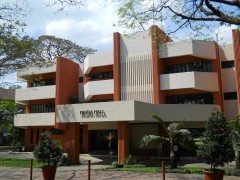Not business as usual: Science, community and practitioners conversations on Yolanda’s risks and reconstruction directions in the light of climate change
January 24, 2014 Leave a comment

Typhoon Haiyan (Yolanda) approaching the Philippines (Nov 3-11, 2013). Source: Wikipedia: Typhoon Haiyan.
The Manila Observatory, the Department of Sociology and Anthropology of the Ateneo de Manila University, Aksyon Klima, and in partnership with Christian Aid cordially invite you to
NOT Business as Usual: Science, Community and Practitioners?Conversations on Yolanda’s Risks and Reconstruction Directions in the Light of Climate Change
28 January 2014, 8:00 am, 5:00 pm, Room 302, 3rd Floor, Faber Hall, Ateneo de Manila University
Disaster risk is a function of the dynamic and complex interactions between hazards, exposure and vulnerability. While bio-geophysical settings are the stage for resilience, those who study and practice disaster management through risk reduction now accept that social forces principally determine it.
The cultural, economic and psychological factors that characterize populations drive exposure and vulnerability and are at the very root of risk. With the official count at almost 8000 dead and missing (6201 and 1785, respectively), and the magnitude of her physical destruction, Yolanda?s wake has become the metaphor for disaster risk, growing exposure and chronic social vulnerability of coastal cities and small islands.
In developing countries, policy and practice need to disrupt these cycles at the very core of each local environment.
The objective of this round-table is to do precisely that
Speakers:
Antonia Yulo-Loyzaga (Manila Observatory)
Rosa Perez, Ph.D. (Manila Observatory and Asian Development Bank)
Dr. Gemma Narisma, Ph.D. (Manila Observatory and Ateneo de Manila
University)
Fernando Siringan, Ph.D. (University of the Philippines)
Cesar Villanoy, Ph. D. (University of the Philippines)
Emma Porio, Ph.D. (Ateneo de Manila University)
Paulo Alcazaren (PDAA Singapore and Editor-in-Chief, BluPrint Magazine)

Tacloban City after the passage of Typhoon Haiyan (Yolanda). Source: Wikipedia: Typhoon Haiyan.

